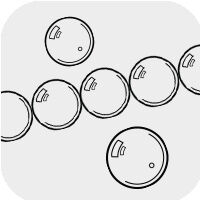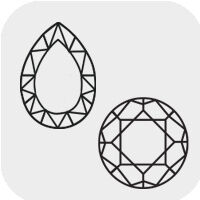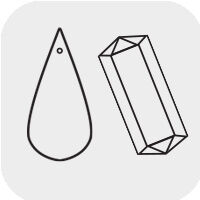Labradorite
Meaning and Properties
Labradorite History
Labradorite is named for where it was found in Labrador, a Canadian province on the Isle of Paul. Inuits once called labradorite a "fire stone" and would use powdered forms to help cure ailments. According to Inuit legend, a warrior saw the Northern Lights trapped in the rocks and struck them with his spear to free some of the lights. The stone was first described by Moravian missionaries of the late eighteenth century, introducing the stone into the European market. Labradorite is not exclusive to Canada, however, and can also be found in Mexico, Russia and Finland. Since its discovery, labradorite has been a highly sought-after stone for use in jewelry. Other than jewelry applications, labradorite has been used in the production of glass, road construction and ceramic manufacturing.

Unearth the beauty and legend of labradorite. Discover the history of this stone, where it's commonly found, metaphysical properties and ideas for incorporating labradorite into jewelry designs.
Labradorite Metaphysical Properties
Labradorite is considered a tremendously spiritual stone, especially helpful for people who tend to overwork. It helps an individual regain energy while aiding the body and spirit in healing itself. In the metaphysical world, labradorite is considered one of the most powerful protectors. The gemstone creates a shield for auras and protects against negativity of the world. Labradorite is said to temper the negativity within ourselves as well. Labradorite is known for its changing colors, so it is no surprise this gemstone is known as a stone of transformation, enhancing strength of will and inner worth. The gemstone labradorite is said to stimulate the throat chakra. Though not associated with any zodiac sign, supposedly the sign of Cancer is especially drawn to labradorite.
Labradorite Geological Properties
Labradorite gemstones are a plagioclase mineral. Plagioclase minerals are feldspars that range from pure albite to pure anthorite. The gem labradorite falls into the 50-70% anthorite category with a 50-70% calcium to 30-50% sodium structure. Labradorite is most commonly known for its brilliant flashes of color called labradoressence caused by lamellar twinning inside the crystal. These twin lamellae structures are compatible at high temperatures, but not at low temperatures, resulting in separation and layering as the gemstone is formed. The extra colors you see in labradorite are caused by refracted light traveling at different speeds through the layers and coming out as a different wave length. A rare variety of labradorite--called spectrolite--displays a richer, fuller spectrum of colors than most.
|
|
|
|
|
|
|
|
|
|
|
|
|
|
|
|
|
|
Proper Care of Labradorite
Since labradorite has internal layers, it is susceptible to breakage if struck too hard or enough pressure is applied. For this reason, a lot of designers tend to use labradorite in earring and necklace designs over bracelets and rings to help avoid direct blows. When cleaning labradorite, the best method is to use gentle soap and water with an untreated cloth. It is not recommended to use ultrasonic, steam or boiling methods to clean labradorite. Store labradorite in a soft cloth to avoid surface scratches caused by harder materials.
To learn more about labradorite and other gemstones, order your copy of Walter Schumann's revised and expanded edition of Gemstones of the World.
Designing with Labradorite
Labradorite cabochons are often set in open-back settings so the light can illuminate their brilliant flash. Sterling silver or antiqued silver beads and settings are favorite metal tones for using alongside labradorite. Since labradorite's color play is more noticeable when light is passing over the stone rather than when static, designers especially love to create drop earrings or beaded dangles for necklaces, which move and catch light. Play up the specific colors within labradorite stones by pairing with gemstones the same color. If a large labradorite cabochon is going to be the focal point of a necklace and has bright green flashes, consider using green hued gems such as light green prehnite, jade or emerald. For highlighting blue flashes, try blue sapphire, aquamarine or apatite. The brilliant flash of crystal is also a favorite to highlight the beauty of labradorite beads.
View more resources featuring labradorite, including Design Ideas, Videos, Tutorials and more!
Shop for Labradorite
**Please note that all metaphysical or healing properties listed are collected from various sources. This information is offered as a service and not meant to treat medical conditions. Fire Mountain Gems and Beads® does not guarantee the validity of any of these statements.
How did you like this resource? Your feedback helps us provide resources that matter to you most.
Copyright Permissions
All works of authorship (articles, videos, tutorials and other creative works) are from the Fire Mountain Gems and Beads® Collection, and permission to copy is granted for non-commercial educational purposes only. All other reproduction requires written permission. For more information, please email copyrightpermission@firemtn.com.




